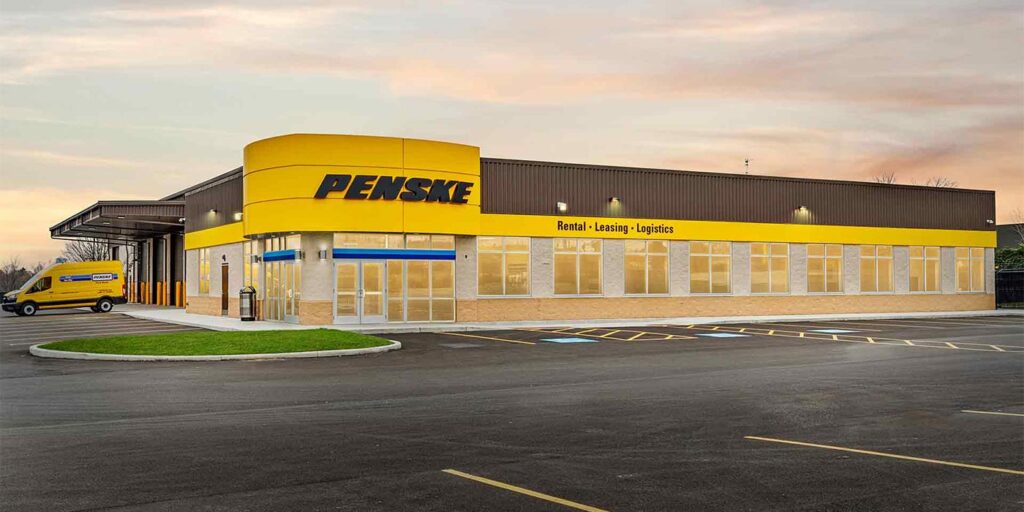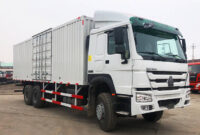Penske Truck Height Clearance: Navigating Safely and Smartly pickup.truckstrend.com
Embarking on a journey with a rental truck, especially one as robust as a Penske, comes with a unique set of responsibilities. Among the most critical, yet often overlooked, is understanding Penske Truck Height Clearance. This seemingly simple measurement – the vertical distance from the ground to the highest point of the truck – holds the key to a smooth, safe, and cost-effective moving or hauling experience. Ignoring it can lead to catastrophic accidents, significant financial penalties, and immense stress.
This comprehensive guide will delve into every facet of Penske truck height clearance, from why it’s crucial to practical steps for ensuring safe navigation, common challenges, and essential tips. Whether you’re a first-time renter or an experienced driver, mastering this vital dimension will empower you to drive with confidence and avoid costly mistakes.
Penske Truck Height Clearance: Navigating Safely and Smartly
Understanding Penske Truck Dimensions: What You Need to Know
Penske offers a diverse fleet, ranging from compact cargo vans to large semi-tractors, and each vehicle boasts unique dimensions. It’s imperative to recognize that "height clearance" refers specifically to the exterior height of the truck, including any roof-mounted features like fairings, lift gates in their highest position, or air conditioning units. This is distinct from the interior cargo height, which dictates how much you can load inside the truck.
Several factors influence a Penske truck’s exterior height:
- Vehicle Type and Size: Naturally, a 26-foot box truck will be significantly taller than a 12-foot model or a cargo van. Semi-tractors, when coupled with trailers, present the tallest configurations.
- Suspension and Tires: While less impactful on overall clearance for rental box trucks, different suspension types or tire sizes can marginally alter a vehicle’s height.
- Add-ons: Features like aerodynamic roof fairings on larger box trucks or even specific liftgate designs can add inches to the overall height.

The most crucial piece of information for any Penske truck’s height is typically found on a decal located inside the driver’s side door jamb, on the dashboard, or near the sun visor. This decal will explicitly state the truck’s exact exterior height, often in feet and inches. Always consult this specific decal for the truck you are operating. Never assume a standard height based on the model name alone, as variations can occur.
Why Height Clearance Matters: Safety, Savings, and Stress Reduction
Understanding and respecting Penske truck height clearance isn’t just a recommendation; it’s a fundamental requirement for responsible operation. The implications of misjudging this dimension are profound:
- Safety First: The most critical reason is safety. Striking an overhead obstacle – be it a low bridge, a tunnel entrance, a gas station canopy, a drive-thru awning, or even low-hanging tree branches and power lines – can lead to severe accidents. This can cause the truck to become wedged, overturn, or suffer catastrophic damage, posing a grave risk to the driver, passengers, and other motorists.
- Avoiding Costly Damage: Collisions with overhead structures result in expensive repairs, not only to the Penske truck but also to the infrastructure you’ve damaged. Rental agreements typically hold the driver responsible for such damage, which can quickly escalate into thousands of dollars in repair costs, towing fees, and potential legal liabilities for property damage.
- Preventing Downtime and Delays: An incident involving height clearance can bring your entire moving or hauling operation to a screeching halt. You could face hours, or even days, of delays while waiting for assistance, repairs, or an alternative vehicle. This translates to lost time, missed appointments, and increased stress.
- Legal and Regulatory Compliance: Commercial vehicles, including larger rental trucks, are subject to specific height regulations on many roads. Violating these can lead to fines, penalties, and even impoundment of the vehicle.
- Peace of Mind: Knowing your truck’s exact height and confidently navigating your route eliminates a significant source of anxiety. It allows you to focus on the road and enjoy a smoother, less stressful journey.


Key Penske Truck Models and Their Typical Height Clearances
While specific measurements should always be verified on the truck itself, here are the typical exterior and interior height ranges for common Penske rental trucks:
| Penske Truck Model/Size | Typical Exterior Height (Approx.) | Typical Interior Cargo Height (Approx.) | Common Use Cases |
|---|---|---|---|
| Cargo Van | 7 ft – 8 ft | 4 ft – 5 ft | Small moves, deliveries, light hauling |
| 12 ft Box Truck | 10 ft 6 in – 11 ft | 6 ft 6 in – 7 ft | Studio/1-bedroom apartment moves, small deliveries |
| 16 ft Box Truck | 11 ft – 11 ft 6 in | 6 ft 10 in – 7 ft 2 in | 1-2 bedroom apartment/small home moves, local hauling |
| 22 ft Box Truck | 12 ft – 12 ft 6 in | 8 ft – 8 ft 6 in | 2-3 bedroom home moves, larger deliveries |
| 26 ft Box Truck | 12 ft 6 in – 13 ft 6 in | 8 ft 6 in – 9 ft | 3-5+ bedroom home moves, large-scale hauling |
| Semi-Tractor | 10 ft – 11 ft (cab only) | N/A (requires trailer) | Commercial long-haul, heavy-duty transport (with trailer typically max 13 ft 6 in) |
Note: These figures are approximate and can vary based on specific model year, features (e.g., roof fairing, liftgate design), and tires. Always confirm the exact height from the decal on your specific Penske truck.
Practical Steps for Ensuring Proper Height Clearance
Proactive measures are your best defense against height-related incidents. Follow these steps to ensure a safe journey:
- Know Your Truck’s Exact Height: This is non-negotiable. Before you even pull out of the Penske lot, locate the height decal on your specific truck. Write it down, memorize it, or take a picture of it. This exact measurement is your primary reference point.
- Plan Your Route Meticulously:
- Truck-Specific Navigation: Invest in or use a GPS system designed for commercial vehicles. These systems allow you to input your truck’s height (and weight, if applicable) and will automatically route you away from low bridges, tunnels, and other height-restricted areas. Standard car GPS units do not provide this critical information.
- Paper Maps/Atlases: Supplement your GPS with a physical truck atlas. These often indicate low clearance areas that might not be updated on all digital maps.
- Pre-Trip Scouting: If you’re heading to an unfamiliar destination (e.g., a new home, a delivery dock), use online satellite views (like Google Maps Street View) to visually inspect potential obstacles like overhead wires, narrow entrances, or low-hanging signs.
- Maintain Constant On-Road Awareness:
- Observe Road Signs: Pay close attention to all road signs. Height restriction signs are usually prominently displayed well in advance of an obstacle, giving you time to react and reroute. They will often state "Clearance X ft Y in."
- Look for Physical Indicators: Be vigilant for signs of past collisions, such as scrape marks on the underside of bridges, damaged overhead signs, or worn-down tree branches. These are clear warnings of potential hazards.
- When in Doubt, Don’t Go: If you are unsure about a clearance, do not attempt to proceed. It’s always safer to pull over, find an alternative route, or even get out and physically inspect the clearance if safe to do so.
- Loading Considerations (Indirectly Related to Height): While your load won’t change the exterior height of the truck, an improperly balanced or excessively tall internal load can affect the truck’s stability and center of gravity, making it more prone to swaying or tipping, especially if you have to make a sudden maneuver near an overhead obstacle. Secure your load properly to prevent shifting.
- Utilize a Spotter: When navigating tight spaces, unfamiliar loading docks, or areas with uncertain clearances, having a spotter outside the truck can be invaluable. They can provide real-time feedback and confirm clearances you might not be able to see from the driver’s seat.
Common Challenges and Solutions Related to Height Clearance
Despite best efforts, certain situations can pose unique challenges:
- Low Bridges and Underpasses:
- Challenge: These are the most common culprits for height-related accidents, often found on older roads or in urban areas.
- Solution: Strict adherence to route planning with truck-specific GPS. Never assume a bridge is tall enough. If you miss a sign, look for U-turn options or alternative routes immediately.
- Parking Garages and Drive-Thrus:
- Challenge: Designed for passenger vehicles, these almost universally have insufficient clearance for Penske box trucks.
- Solution: Never attempt to enter a parking garage or drive-thru with a Penske box truck. Park legally elsewhere and walk, or find alternative services.
- Tree Limbs and Power Lines:
- Challenge: Especially in residential areas or rural roads, low-hanging branches and utility lines can be deceptive and cause damage.
- Solution: Maintain vigilance. If on private property, you might be able to request trimming. Otherwise, exercise extreme caution or find another route.
- Loading Dock Areas and Warehouse Entrances:
- Challenge: Some commercial facilities have specific dock door heights or overhead structures that may not accommodate all truck sizes.
- Solution: If possible, inquire about facility clearances beforehand. Use a spotter when backing into docks.
- Unexpected Obstacles/Construction Zones:
- Challenge: Temporary signs, scaffolding, or altered road configurations can create unforeseen height hazards.
- Solution: Drive defensively, reduce speed in construction zones, and be prepared to stop and reassess if anything looks questionable.
Practical Advice and Actionable Insights
- Don’t Guess, Measure: Never rely on visual estimation. Always know your truck’s precise height.
- Plan, Plan, Plan: Your route planning is your first line of defense.
- Invest in the Right Tools: A truck-specific GPS is an invaluable asset, not an optional luxury.
- When in Doubt, Find Another Way Out: It’s far better to turn around, take a detour, or even back up cautiously than to risk an accident.
- Educate Everyone: If you have co-drivers or spotters, ensure they also understand the truck’s height and the importance of checking clearances.
- Stay Calm: If you find yourself approaching a low clearance unexpectedly, remain calm. Look for signs of escape routes (e.g., shoulder, side road, U-turn opportunity).
Frequently Asked Questions (FAQ)
Q: Where can I find my Penske truck’s exact height?
A: The truck’s exact exterior height is typically listed on a decal located inside the driver’s side door jamb, on the dashboard, or near the sun visor. Always check this specific decal.
Q: Do all Penske trucks of the same model have the exact same height?
A: While they are generally consistent, minor variations can occur due to different model years, specific features (like roof fairings or liftgates), or even tire wear. Always verify the height on the specific truck you are driving.
Q: What happens if I hit something due to height clearance issues with a Penske truck?
A: You will likely be held financially responsible for all damages to the Penske truck, any damaged property (e.g., bridge, canopy), towing costs, and potential legal fees. Rental agreements typically outline these responsibilities clearly.
Q: Can I use a regular car GPS for truck routes?
A: No, it is strongly discouraged. Regular car GPS units do not account for vehicle height, weight, or commercial vehicle restrictions. This can lead you directly into low clearance areas or roads where your truck is not permitted. Always use a truck-specific GPS.
Q: What’s the difference between exterior and interior height?
A: Exterior height is the overall height of the truck from the ground to its highest point (what you need to know for clearances). Interior height is the measurement from the floor of the cargo area to the ceiling inside the box (what you need to know for loading cargo).
Q: Are lift gates included in the height measurement?
A: The listed height on the truck’s decal typically accounts for the highest point of the truck in its standard operational configuration. While a liftgate itself doesn’t add to the truck’s overall static height, ensure it is fully retracted and secured, and that no cargo on the liftgate itself extends above the truck’s roofline if you’re using it for loading/unloading in a tight spot.
Conclusion
Navigating the roads with a Penske truck is a significant responsibility that requires careful attention to detail, especially concerning height clearance. By understanding your truck’s exact dimensions, meticulously planning your route, and maintaining unwavering awareness on the road, you can mitigate risks, prevent costly accidents, and ensure a smooth, safe, and stress-free journey. Remember, a few moments of preparation and caution can save you countless hours of hassle and thousands of dollars in potential damages. Drive smart, drive safe, and always know your Penske truck’s height.



